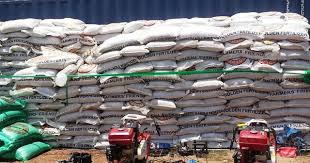How to grow mushrooms in chicken coop
You probably like your
chickens as much as you dislike their mess.
But what if you had a chicken
run that literally ate the mess?
Tradd Cotter, founder of a
mushroom farm and research lab in South Carolina called Mushroom Mountain, did
an experiment to accomplish just that, mixing the wood chips of his chicken run
with mushroom spawn.
While most chicken runs
benefit from a little mulch, Cotter added to his a mushroom called King
Stropharia or Wine Cap (Stropharia rugoso-annulata) that literally eats chicken
manure, combating both harmful bacteria and odor.
Added bonus: Wine Cap
mushrooms make an edible secondary crop.
He says the method is cheap
and easy to replicate, even if you’re a fungi amateur.
Mushrooms 101
To understand this
coop-cleaning method, first let’s talk about mushrooms.
Mushrooms are fungi. Though
they seem to pop up overnight, they actually take days or even weeks to
develop, and the process occurs mostly underground.
Mushrooms grow from tiny
spores, dust-like particles under the mushroom cap. To grow, mushrooms feed on
things like sawdust, grain or wood chips. An easy form of a mushroom culture to
use is called spawn, which works a little like a starter for bread. Sawdust
spawn, commonly used to grow King Stropharia, is the most common form used to
mix into wood chips, compost, or mulch in gardens and landscapes.
Mushrooms develop from tiny
threadlike roots underground called mycelium. Mycelium spreads under the soil,
tunneling under tree bark of fallen logs and in grassy lawns in search of food,
forming subterranean mats, which are the body of the fungus. This stuff grows
particularly well when applied to a growing medium or substrate, such as straw
or cardboard, corncobs or cocoa seed hulls.
Mycelium threads its way
through a compost heap or a garden or the forest floor, going through its
natural food first. When the fungus senses it’s about to run out of food, it’ll
gathers energy quickly in order to fruit, which is the mushroom you see.
All living things fight to
survive, and mushrooms are no different. If a fungus has a growing medium
that’s polluted, and needs that food for the last push before fruiting, it will
attack pollutants with the help of other bacteria, says Cotter, who has studied
fungi at Mushroom Mountain for 22 years, and now produces edible mushroom spawn
for buyers such as Whole Foods.
Cotter says fungi secrete
enzymes that are capable of breaking down complex, toxic molecules—essentially
taking pollutants apart like Legos, and putting them back together in an
organic form that it can eat, leaving a healthy layer of soil in its wake. Purposely
growing mushrooms, says Cotter, can literally grow good dirt.
Of the thousands of fungi,
says Cotter, each has different enzymes that make them good at breaking down
particular things. The research arm of his lab collects and studies fungi that
may break down oil, or act as parasites against fire ants, beetles or aphids.
(The lab is open to the public.)
“We figure out what mushrooms
are good at,” says Cotter. “In the laboratory, it’s like putting down tools in
a room to see which one does what. Who’s good at killing bacteria? Which
species can break down herbicides?”
And, as it happens, one
species is really good at cleaning chicken coops.
Fungus as filter
Growing mushrooms in a coop
is a form of mycoremediation—biological or chemical cleanup using fungi.
Using a native species called
King Stropharia, Cotter set up his chicken run so this fungi feeds on fresh
manure as protein, producing gourmet mushrooms in the process.
Here’s how:
1. In the chicken run, layer
6-8 inches of hardwood wood chips. Mix in King Stropharia spawn as you go. Lay
down poultry wire on top.
2. On top of this filter, add
3-4 inches of wood chips mixed again with King Stropharia spawn. Worms
attracted to the spawn come to the surface for it, inspiring the chickens to
scratch and work the chips. Their manure hits the wood-chip surface, then moves
down through the protected filter, where the fungus consumes it in order to
thrive.
3. Water the run daily for
the first week, then weekly to keep the fertilizer liquid, washing it down to
that bottom layer where the King Stropharia is waiting, basically killing
harmful coliforms and “eating them for dinner, preventing bacteria and odor
from leaving the site, capturing and preventing run-off,” says Cotter.
4. On the outside of his coop,
Cotter adds an additional foot or two of wood chips like a halo. If the coop is
located near a downhill slope, he’d even suggest making a trench to capture
some of the water to slow it down. Fill the halo and trench with hardwood chips
and spawn. “The bigger the filter, the better,” he says. The mycelium mat grows
quickly in these conditions, spreading outward from the coop, sending up its
fruits (the mushrooms) where there’s shade and moisture, avoiding the sun, up
to several feet away. Cotter even directs his mushroom crop by planting coop
fencing with gourds to create shade.
5. He harvests the mushrooms
at the edges of the coop throughout summer and fall. Both the stem and cap are
edible, hinting at flavors of wine and asparagus. He cooks them with risotto,
or grills with marinade.
Rather than the usual
muck-out of the coop, Cotter waters the top layer of the wood chips weekly. He
replaces the entire filter yearly, and harvests a nice layer of soil that’s
developed from the nutrient breakdown.
The system is
inexpensive—some arborists even give away hard wood chips. A bag of King
Stropharia from Mushroom Mountain runs $25 to inoculate 1 cubic yard of chips.
Further clean-up
Cotter added one more detail
that makes cleanup even easier.
Inside, where the roost is,
he noticed the manure pileup was concentrated in one line. He layered sheets of
cardboard beneath where they sit, which makes a “shelf” that every two weeks he
removes and stacks near his compost pile. He wets the stack, sprinkles King Stropharia
spawn between the cardboard, and it all turns into compost and worm food.
“It’s very easy, almost
maintenance free,” he says. “Best of all, the whole coop is smell free.”




Comments
Post a Comment